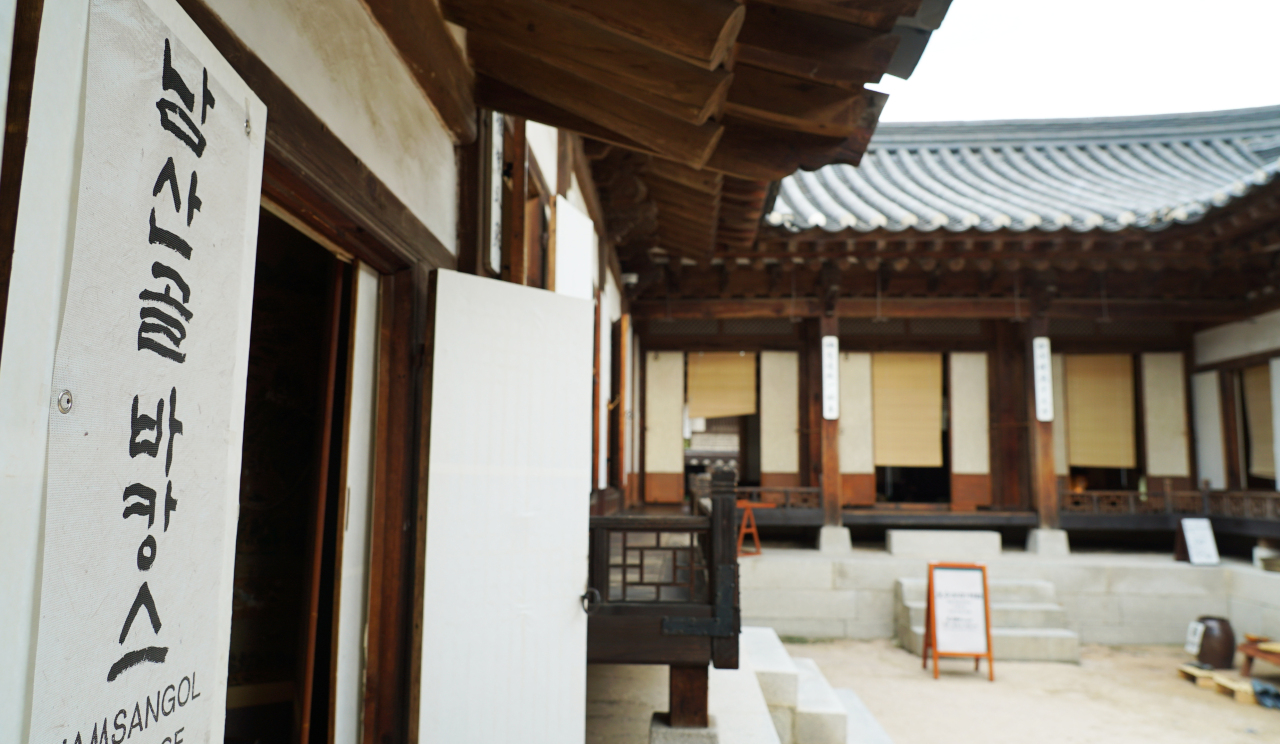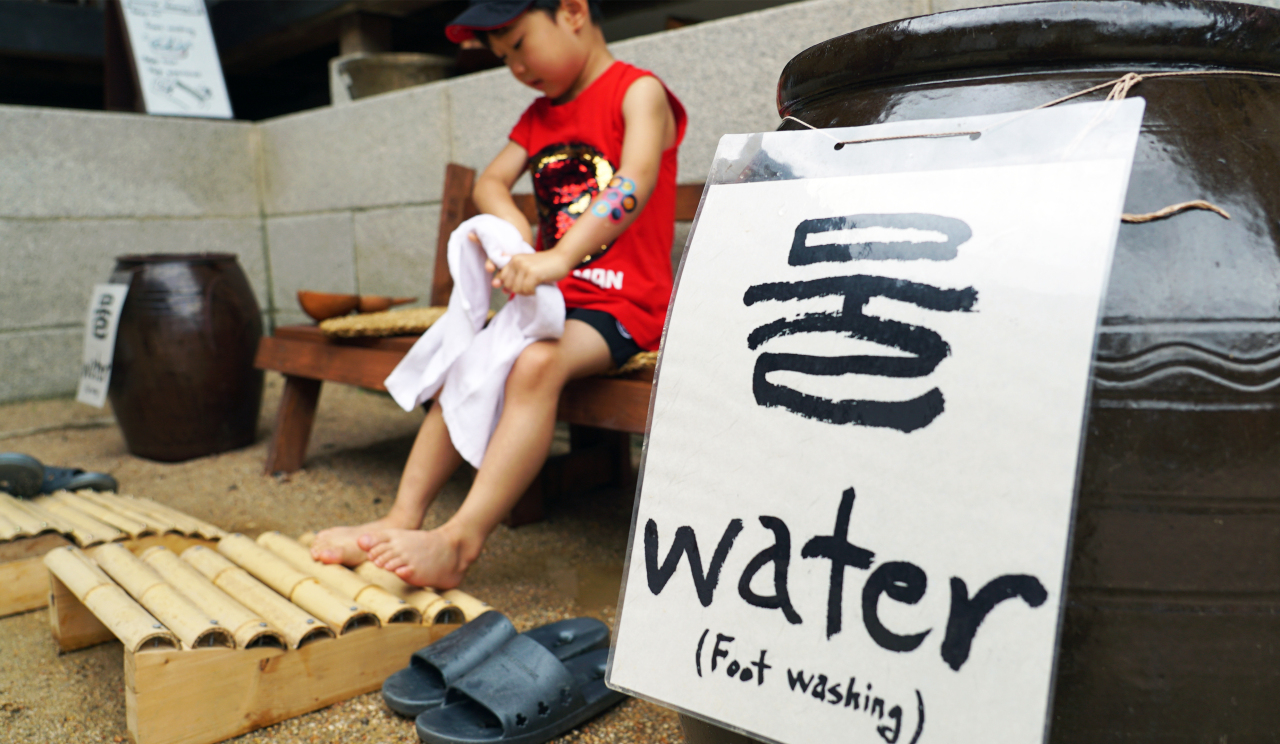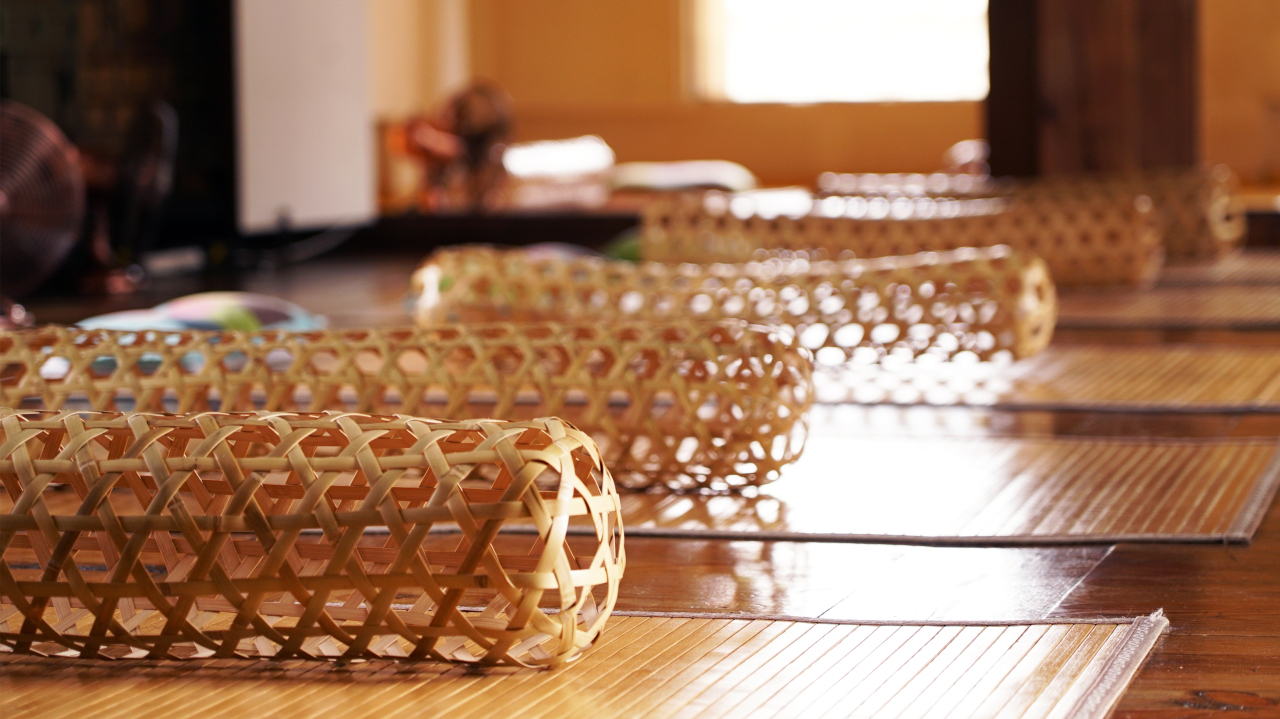“The arrogant sun.” This is what Koreans called the source of scorching summer heat during the Joseon era (1392-1910). Summer was always sizzling and humid here.
Just how did our ancestors cope with the sweltering heat with no air-conditioning and electric fans? Hints can be found at Namsangol Hanok Village.
 |
The Yun family’s hanok, where the Namsangol Vacance program is offered (Choi Ji-won/The Korea Herald) |
Located near Chungmuro Station in central Seoul, the village is a collection of five traditional houses, or hanok, where foreign tourists visit to experience Korea’s tradition and culture.
A reenacted Joseon-era village, it is currently running the “Namsangol Vacance” program, offering tourists a chance to refresh themselves the old Korean way.
Those who wish to participate in the program should head to the House of the Yun family
The experience starts with a foot wash, or takjok. Sitting on the wooden bench at the yard there, visitors dip a gourd bucket into a water pot and pour the water over their feet.
 |
5-year-old Kang Yoon experience takjok (footbath) (Choi Ji-won/The Korea Herald) |
Back in the Joseon era, this area at the foot of Namsan was where noblemen chilled out in the dog days of summer, dipping their feet in the Cheonghakji pond and relaxing in the Cheonugak pavilion. The pond and pavilion, restored along with the houses, are part of Namsangol Hanok Village’s premises.
After the foot bath, visitors walk barefoot on the wooden floor into the traditional Korean living room.
With all the doors and windows wide open and covered with bamboo shades, which provide privacy while allowing the wind to blow in, the air inside feels crisp and cool compared to the outside.
In the living room, visitors can enjoy 50 minutes of osu, a midday nap. Each person is given a mattress and a body pillow, both made from bamboo wood, and a regular head pillow.
The bamboo body pillow was a much-loved essential on summer nights, so much so that it was called jukbuin -- meaning a bamboo wife, similar to the English name, Dutch wife. Made of woven bamboo strips, it has a hollow center, allowing airflow to reach more parts of the body while providing the needed support to someone sleeping on the side.
 |
Traditional Korean pillow made of bamboo (Photo by Choi Ji-won/The Korea Herald) |
A cup of cold omija tea is provided before the nap. Made of red omija berries, the tea has a unique sweet-and-sour taste believed to stimulate one’s appetite in the season when it is easy to become fatigued.
“Our ancestors used to rest at the Cheonugak Pavilion and wash their feet in the Cheonghakji Pond, and we hope tourists and visitors can similarly enjoy a moment of peaceful escape from the summer heat,” said Kim Ji-seon, the festival planning team’s chief producer.
“Namsangol Vacance” is held between noon and 3 p.m. daily at a fee of 2,000 won ($1.70) per person.
For those people taking part in the program, a traditional massage session on Saturdays and a Korean traditional fortunetelling and “fate-reading” session on Sundays are provided without a fee.
Along with the seasonal program, the village offers other cultural experiences for tourists, including falconry, making traditional rice cakes, natural dying of cloth and hanbok fitting. The program continues until the end of this month.
For more information, visit Namsangol Hanok Village’s website at www.hanokmaeul.or.kr or contact 070-4468-9878.
By Choi Ji-won (
jwc@heraldcorp.com)










![[Today’s K-pop] Blackpink’s Jennie, Lisa invited to Coachella as solo acts](http://res.heraldm.com/phpwas/restmb_idxmake.php?idx=644&simg=/content/image/2024/11/21/20241121050099_0.jpg)